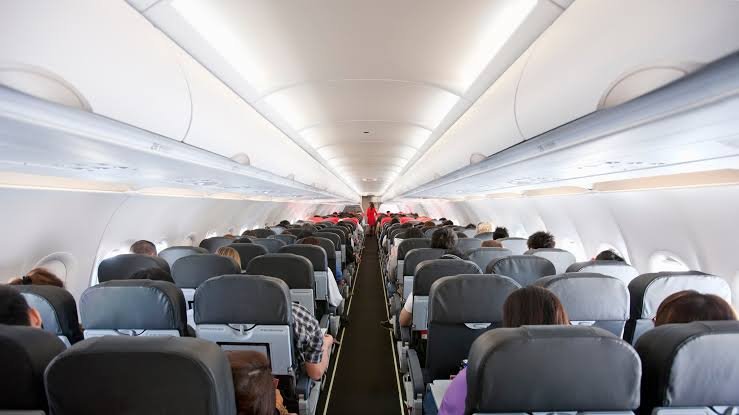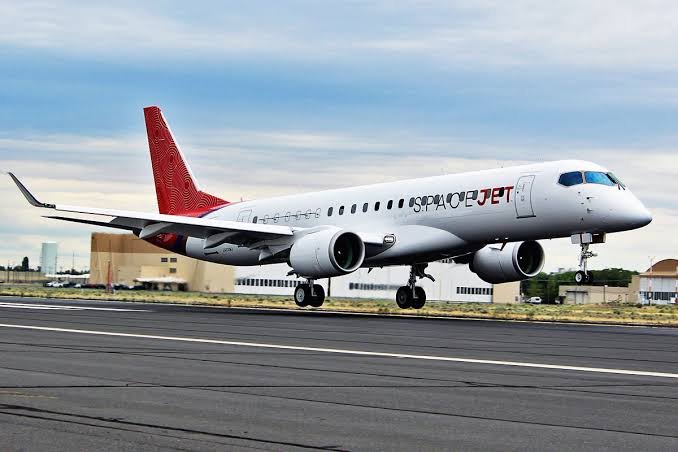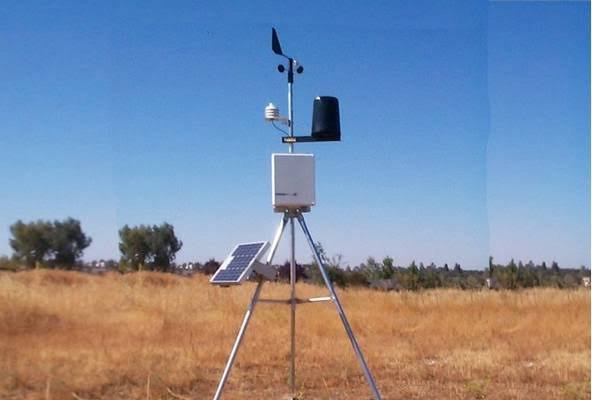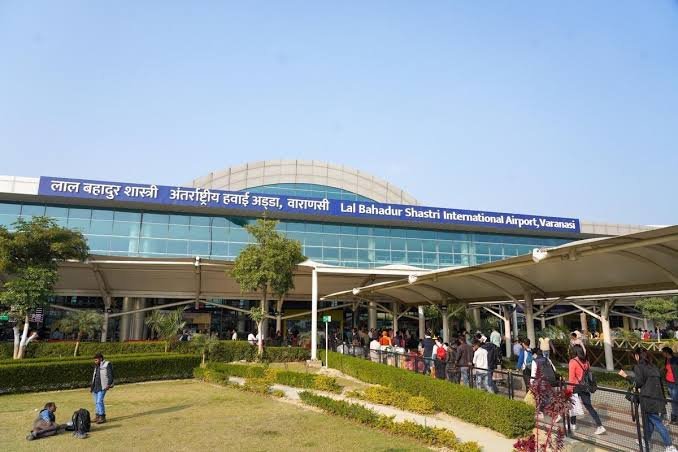Despite weather difficulties, flight diversion of SpiceJet Flight SG 327 from Bengaluru to Darbhanga lands safely in Varanasi
Most people agree that flying is a convenient and quick way to get about. Nevertheless, there are times when unanticipated difficulties, such bad weather, force mid-flight detours. This article discusses the recent event involving SpiceJet Flight SG 327, which was supposed to travel from Bengaluru to Darbhanga but had to make an emergency landing at Babatpur Airport in Varanasi due to erratic skies.

The Event: A Departured Flight
On an apparently typical day, SpiceJet’s SG 327, carrying 200 passengers, departed Bengaluru at 11:30 AM as planned. The airplane was scheduled to land at Darbhanga about 1:30 PM. But when the plane got closer to the Darbhanga airspace, it ran into bad weather with a lot of clouds, rain, and low visibility.
Darbhanga Airspace Difficulties
The Air Traffic Control (ATC) decided that the weather was not appropriate for a safe landing as SG 327 arrived close to Darbhanga Airport. There were multiple attempts to reevaluate the circumstances, but nothing changed. The flight crew was immediately informed by the ATC to keep the aircraft in a holding pattern, which involved circling the skies for around half an hour.
The Choice to Change Course
The ATC told the crew to divert the flight to the closest acceptable airfield because it was doubtful that the weather would improve in a short period of time. The safest option was found to be Lal Bahadur Shastri International Airport (Babatpur Airport), which is roughly 250 kilometers from Darbhanga. To the relief of the passengers and crew, SG 327 made a smooth landing in Varanasi at 3:00 PM.
The Passenger Experience
Relief and Anxiety
The experience was a mixture of relief and fear for the 200 people on board SG 327. The passengers were initially uneasy due to the extended airborne circle because they were not aware of the external circumstances. Fears were lessened, although, by the crew’s professionalism in informing and comforting the passengers.

The passengers were required to stay on board the airplane while the airline worked with ATC and ground personnel to determine what to do next after landing in Varanasi. Despite being inconvenient, the delay was handled carefully and effectively. After the weather improved and all passengers arrived safely at their destination, the flight finally began its voyage to Darbhanga at 4:30 PM.
Babatpur Airport’s Function
Varanasi Airport’s Strategic Significance
Because of its advantageous location and state-of-the-art amenities, Varanasi’s Lal Bahadur Shastri International Airport has become an essential hub for managing diverted planes. With its large runway, state-of-the-art navigation systems, and skilled ground crew, the airport is a dependable backup in case of an emergency.
By quickly accommodating the flight diversion, guaranteeing passenger safety, and working with SpiceJet to ensure a smooth subsequent voyage, the airport’s crew proved its capabilities throughout this situation.
Airline Authorities’ Point of View
SpiceJet’s statement
Officials from SpiceJet acknowledged that the Darbhanga weather forced the flight diversion. The decision to land in Varanasi was made in accordance with accepted aviation procedures, with the safety of the passengers and crew as the top priority. “Our passengers’ safety is our first concern at all times. We appreciate the prompt action and assistance of our crew, ATC, and the Varanasi Airport staff,” a SpiceJet representative stated.

Dedication to Passenger Security
These kinds of incidents highlight the airline’s dedication to guaranteeing passenger safety in all situations. Despite being inconvenient, flight diversions are an essential component of aviation safety protocols, intended to manage uncontrollable circumstances like bad weather.
Comprehending Aviation Weather Diversions
Reasons for Departures
In aviation, weather-related flight diversions are frequent, particularly in the winter or monsoon seasons when fog, rain, or storms frequently impair vision. The following are some of the main causes of diversions: Poor visibility brought on by a lot of rain or fog.
Strong crosswinds that make landing dangerous; lightning or thunderstorms close to the airport of destination.
Methods Used in Diversions
In the event of difficult weather, pilots and airlines adhere to a well-established procedure:
In order to wait for better weather, the aircraft goes into a holding pattern, which involves circling the assigned airspace.
ATC Communication: Pilots stay in close contact with ATC to get weather and landing clearance updates.
Decision to Divert: The flight is diverted to a different airport if the poor conditions persist.
Ground Coordination: To attend to passenger needs and make arrangements for subsequent travel, the airline works with ground personnel at the diverted airport.
The Wider View: Safety Procedures in Aviation
Technological Developments
Pilots can identify and steer clear of severe weather situations far in advance because to modern aircraft’s sophisticated navigation systems and weather radars. In order to support aircraft in difficult weather, airports have also improved their infrastructure with Instrument Landing Systems (ILS) and cutting-edge ATC services.

Education and Readiness
Airlines make significant investments in pilot training to make sure they are prepared to manage crises and make wise choices. Crews are prepared for situations like weather diversions through regular simulation exercises and real-world experience.
Awareness of Passengers
During such occasions, airlines have also taken action to alert passengers. In order to keep passengers informed and reassured about their safety, real-time information are provided through customer service, smartphone apps, and onboard announcements.
Takeaways from the Experience
The Value of Other Airports
The event emphasizes how important backup airports, such as Babatpur Airport in Varanasi, are to guaranteeing the security of flight diversions. The overall resilience of the aviation industry can be increased by making investments in rural airports and outfitting them with contemporary amenities.
The Need for Interaction
During flight diversions, it is crucial for passengers, ATC, and airline authorities to communicate effectively. The passenger experience can be greatly enhanced by being open and honest about delays and their causes.
Weather Tracking

Predictive analytics and improved weather monitoring systems can assist airlines in anticipating weather-related issues more effectively, which lowers the possibility of last-minute flight diversions.
Conclusion: A Secure Resolution
The fact that SpiceJet Flight SG 327 was successfully diverted and landed at Babatpur Airport in Varanasi shows how strong India’s aviation safety regulations are. Notwithstanding the difficulties brought on by bad weather, the airline, ATC, and airport employees worked together to make sure that every traveler had a smooth and safe journey.
Incidents like this serve as a reminder of the significance of readiness, technology, and teamwork in guaranteeing passenger safety as air travel continues to increase. Although flight diversions may result in brief discomfort, they demonstrate the aviation industry’s dedication to putting people’s lives first.







